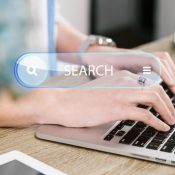
Ideal Customer: Crafting Tailored Solutions to Meet Their Needs
Understanding and defining the “ideal customer” is paramount for any business striving for success in today’s competitive landscape. The term “ideal customer” encapsulates the precise demographic, psychographic, and behavioral traits that align with a company’s offerings. Businesses can tailor their marketing efforts, product development, and customer service by pinpointing this target persona to resonate with those most likely to engage and convert. In this discourse, we delve into the significance of identifying the ideal customer and how it serves as the cornerstone for strategic growth and sustainability.
The eight tips below will help you identify your ideal customer and what to do to attract regular customers.
1. Identify the ideal customer through your business knowledge.
You can only identify your ideal customer if you know your own business inside out and you can put yourself in the customer’s perspective. Three simple questions will help.
What customer problems does my product or service solve?
What characterizes the performance of my company?
Why should customers use exactly the services offered by the company and not those of a competitor?
Only an honest answer creates the conditions for creating a customer profile that fits the company’s products or services. In most cases, companies will conclude that their innovation ability is insufficient to differentiate themselves from the competition.
Nevertheless, many customers may prefer your products. You must be convinced of your performance and present yourself accordingly.
After you have assessed your offer from the customer’s point of view, you should turn to your current customer type. Are you happy with this? Does it provide you with the necessary sales for a sufficient profit? An answer can be found based on data from a suitable CRM (Customer Relationship Management). As a result, the next question arises, which is to be answered below: Which characteristics should an ideal customer possess?
2. What are the characteristics of a perfect customer?
To identify ideal customers who match your offer, you must consider the characteristics of a hypothetical perfect customer.
The perfect customer is a repeat customer. This type of customer is a top priority for any business. Regular customers promise continuous sales. They are also characterized by loyalty. Regular customers appreciate your company’s offers and are usually characterized by high satisfaction.
A perfect consumer always pays his bills on time, promising liquidity for the company and planning security. B2B customers stick to agreed-upon deadlines, and verbal agreements are always kept. Shared collaboration tools simplify coordination.
A perfect customer uses the company’s feedback options on the purchased product or service via a contact center or the form on the company website, thereby supporting product improvement. The client also seeks advice, reacts openly, and asks questions. Suggestions for alternative solutions to the problem will be accepted if they are in the interest of both parties.
Courtesy and a friendly demeanor are a matter of course for a seller. It’s nice if this also applies to the buyer. It is an important basis for a longer-lasting economic relationship. The perfect customer will allow the seller to make a mistake once in a while and react to it with composure. A good customer pays tribute if deficiencies are remedied at short notice.
3. Evaluate your current customer base.
Does the perfect customer characterized in the second section exist? He will remain idealized, wishful thinking, just like the perfect salesman. Every company has to approach the latter. A company may be able to identify the ideal customer with a targeted analysis of the current customer base. The prerequisite for this, however, is using a CRM (Customer Relationship Management) equipped with the appropriate functions and a well-maintained database.
Bitrix24’s software tools provide an accurate view of how customers found their way to the company, from initial interest to purchase decision. Detailed analytics can be used to find out which type of customer is being targeted by which advertising. Data can be collected, and user profiles can be created by linking the website, online shop, and social media platforms. Reporting functions determine the ROI (return on investment) and, thus, the effectiveness of marketing measures for specific target groups. By linking to the CRM, you determine the buyer group developing the greatest affinity for your products or services. This information can create a customer profile and identify the ideal customer.
4. Creating a profile for the ideal customer
The previous sections looked at customer characteristics and the possibility of using customer data to gain clues about how to identify your ideal customer. But that alone is not enough.
To be able to conduct effective marketing that addresses the real prospects for your offers, it is necessary to define customers’ prototypes. Such customers are called buyer personas in modern marketing. Depending on the company’s objective, it is practicable to define several personas and to serve them with different messages via different advertising channels. In this way, personalized advertising campaigns can be aimed at specific customer groups, or the advertising can be placed in online media, on social media platforms, or in traditional print media in a target group-specific manner. Suitable marketing tools make it easier to target different customer groups and, at the same time, help with customer management, lead generation, and lead maintenance.
What is required to create personas, and how does a company get the necessary data? This is the information to focus on:
Demographics (age, gender, marital status, income, education, and employment status)
Hobbies, goals, visions
Consumer behavior with sources of supply (retail trade or online shops)
Interest in certain products, technical innovations, and services
Information sources for product information (online media or classic print products)
The necessary data is obtained through surveys & feedback softwares or tools from contacts with interested parties, the evaluation of your customer data, or research on social media platforms. The evaluation of the information and the assignment to one’s own offers good prerequisites for identifying the ideal customer.
5. Address the identified customer.
It’s time to target the prospects after defining the right personas to identify the ideal customer. Time-consuming research and analysis must ultimately be translated into measurable successes.
Where can you find your customers? Depending on the previously defined personas, you must decide whether to use traditional print media, seek personal contact via phone call or email, or use social media channels such as Instagram, Facebook, Twitter, or LinkedIn.
But no matter how you address your customers, you must ensure that they remain your customers. Identifying the ideal customer is difficult and often involves considerable effort. Losing him again is, therefore, to be avoided at all costs. Therefore, it is essential to always be available for the customer in case of queries. It is advantageous to offer alternative communication options. In addition to the classic callback offer, messenger services, video calls, or chats are particularly suitable for younger customers.
Free consultations are ideal for acquiring new customers. Standing out from the competition with free services can also open new avenues. This gives you access to other interested parties.
6. Getting to know each other and building trust
To identify the ideal customer, getting to know prospective customers and building trust is necessary. Only on this basis is it possible to determine what customers want and need. Modern marketing methods do not primarily focus on selling products but establish a relationship with prospects first. This is based on the provision of information, mostly free of charge, not limited to the products or services offered for sale. In this way, entertainment offers and news can be offered on your company website, which is related to your products but offers a wide range of added value in terms of information. An example of this is a manufacturer of outdoor items, which puts exciting experience reports in the foreground using the equipment produced by the company. A common practice in this segment is the outfitting of expeditions as sponsorship.
Such reports address a specific audience. You can build your community by linking the company website with social media channels, including product discussions. In turn, user data can be evaluated, and leads can be generated from the feedback from the community and the connection of the social media platform to your own CRM.
7. Ideal clients need to appreciate your work.
Successful marketing and sales work leads to finding customers who appreciate your company’s products or services. By identifying the wishes of interested parties and comparing them with your offers, communication can be set in motion that promises success. Then, it depends on the seller’s persuasiveness to turn the prospect into a real buyer. Even if it is impossible to offer special added value compared to the competition with the company’s offers, customer needs can be satisfied with special service and good support.
However, one important aspect should never be forgotten: the financial possibilities of the customer. Even if you succeed in building a trusting basis in communication and customers appreciate your work, you will not be able to identify them as ideal customers if the services offered exceed the prospective customer’s financial strength. Although it can make sense to grant certain discounts when new customers are acquired, building a lasting relationship will not be possible.
On the other hand, some affluent customers are very demanding and always critical. They look for defects to reduce the agreed price. Such consumers are, by no means, ideal customers. Long-term cooperation is not recommended.
8. Find customers who encourage innovation.
There are many advantages to having many regular customers and working with them over a long period. The company’s products are tailored to the customers’ needs, and communication usually occurs without tension. However, this form of sales harbors a risk: companies can lose their sense of necessary innovations. Competitors take advantage of the time your company is doing well with a solid customer base and gain a competitive edge. No matter how loyal customers are to a company and appreciate the value of the previous cooperation, they will switch to another provider if their products promise added value sooner or later.
Therefore, the ideal customer secures profitable sales for a company and promotes innovation. Marketing primarily consists of obtaining continuous feedback from customers, asking for suggestions for improving their products or services, and, of course, implementing them. Ideal customers are willing to communicate and take advantage of their opportunities.
However, customer feedback alone is not enough to unlock your products’ development potential. Constantly analyzing the competition and collecting comments in communities or on rating portals helps with further innovative development of one’s range of offers and, thus, the receipt of an ideal customer base.
FAQ
What is an ideal customer?
An ideal customer is a consumer or client (in the B2B area) whose needs are the same as your company’s offers and services. Since people develop different needs, a company can only serve a certain target group. The task of marketing is to identify and address precisely this target group.
How do you create an ideal customer profile?
An ideal customer profile is created by creating so-called buyer personas. These are fictitious customers who are tailored to their offerings. Persona characteristics include demographics, interests, consumer behavior, and financial capabilities. Data for personas is generated through surveys, feedback, and the analysis of our regular customers.
How do I turn an ideal customer into a regular customer?
Since an ideal customer’s wishes and product requirements correspond to the company’s portfolio of services, it makes sense to win this consumer over as a regular customer. Coordinated customer loyalty measures must stimulate customer satisfaction to such an extent that a cyclically repeated desire to buy is triggered.
What are the advantages of defining personas?
Defining personas as ideal customers has key benefits. All marketing actions specifically target the characteristics of these personas. Focusing on the ideal customer reduces the price pressure on your offers since they do not have to compete with the unspecific offers of many competitors.
Conclusion
In conclusion, the concept of the “ideal customer” serves as the compass guiding businesses through the vast sea of consumer demographics. By intimately understanding this target persona’s needs, preferences, and pain points, companies can forge deeper connections, drive higher conversions, and foster long-term loyalty. Embracing the mantra of quality over quantity, businesses can optimize resources and efforts toward cultivating meaningful relationships with those individuals who align most closely with their values and offerings. Pursuing the ideal customer isn’t just about maximizing profits; it’s about creating mutually beneficial exchanges that enrich both the business and the consumer experience.




